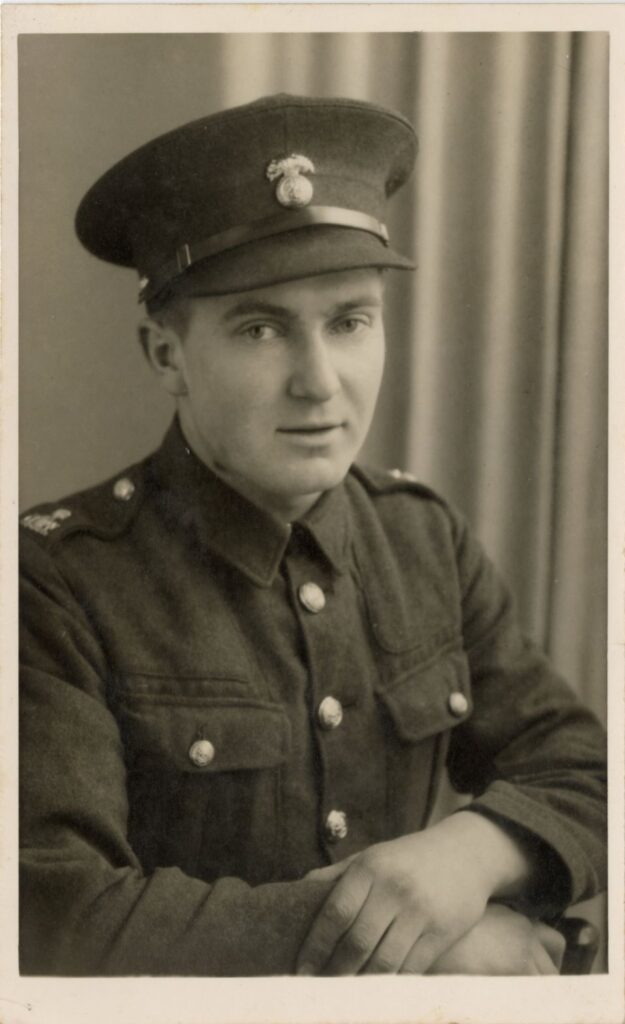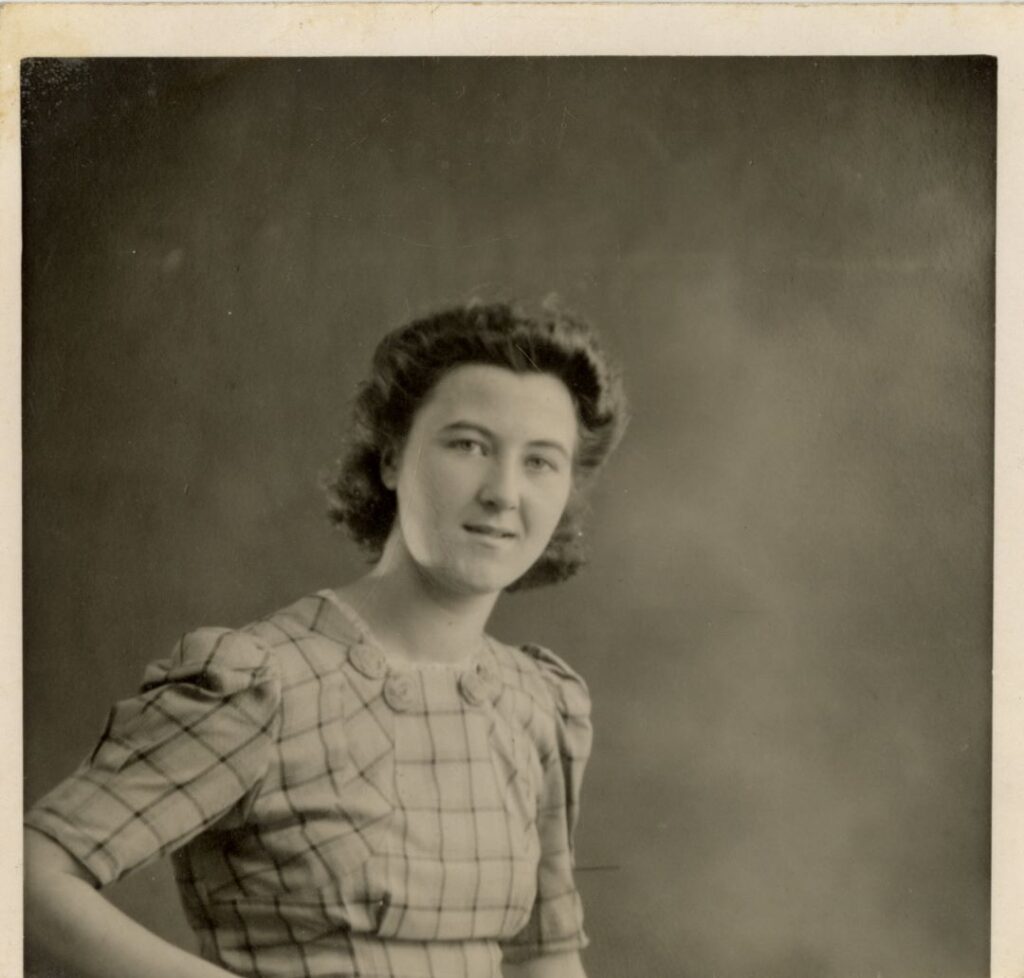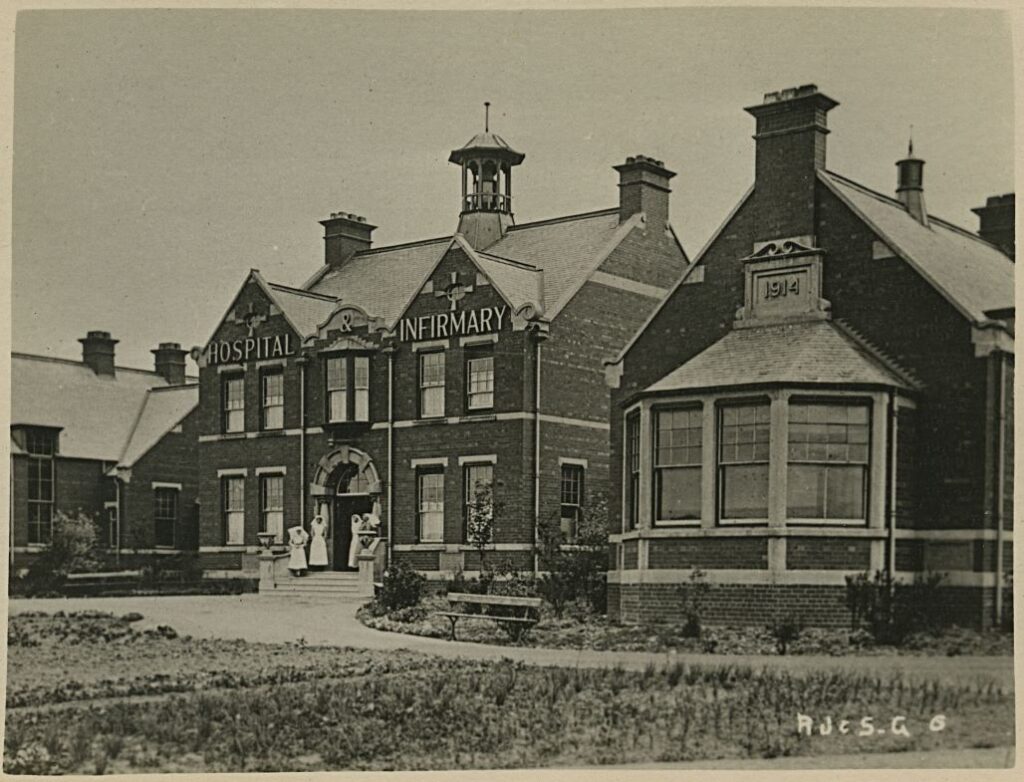
LEST WE FORGET:
Sergeant Kenneth William Johnston
4273778 9th Battalion Royal Northumberland Fusiliers
1 February 1920 – 3 September 1974
Today, on Remembrance Day, we look at the life of Ken Johnston; a gentleman we have had the privilege to get to know posthumously this year, through the eyes of his children and the memorabilia he left behind…
Earlier this year, we collected a deposit of papers and textiles from the shop J.M. Johnston & Son, Ironmongers & Plumbers, in Glanton, near Alnwick. Amongst the items we brought back with us to the Archives was the Second World War uniform of Kenneth William Johnston.
Ken was born on 1 February 1920 to John and Mary Johnston, and lived at Norfolk House, Glanton, along with his brother, Reg. John worked in the business known as William Douglas (and before that Wilkin and Dickman), before later purchasing it. Attending Glanton Primary School and then the Duke’s School in Alnwick, Ken went on to work in his fathers’ business. He was a well-known character throughout the county, playing in the Coronation Dance Band from its formation in 1937.
He enlisted with the 9th Battalion, Northumberland Fusiliers in 1939, and they were transported to Norfolk to defend the coast before sailing to France. He was evacuated from Dunkirk in 1940, having to leave his accordion behind, which didn’t bode well for the band back home! After Dunkirk, Ken carried out training throughout the UK before sailing towards the Middle East in October 1941. After Pearl Harbour and America’s entrance into the War, the troops instead headed to the Far East, sailing to Bombay for training, before arriving in Singapore in January 1942.
At this point, the Japanese army were only 30 miles from Singapore, and when the island fell, allied troops were taken prisoner. Ken served time at various camps in Singapore and Thailand including Changi and Tha Muang on the Thailand/Burma Death Railway. They were liberated by American Marines in 1945, and Ken began a long journey home via the Phillippines, Hawaii and Vancouver, reaching Southampton on 8 November 1945 – home at last.
Ken met his wife-to-be, Margaret Frater, at the VE and VJ dance held in Glanton Memorial Hall, to celebrate the men who had returned from War. They went on to have three children, Pamela, Dianne & Robert and continued to successfully run the family business, living in several properties in the village, before moving to Crag View, above the shop, in 1971.

Within the thriving business, Ken carried out the day to day work – electrical, TV rentals and office admin – while his brother Reg worked alongside Arthur Thompson as the businesses plumbers. Ken’s children remember their dad starting work at 7am and working until late, six days a week, although he was on call 24/7 – he was once called out to a TV problem on Christmas Day!
Ken continued playing music as part of the local band, ‘The Vagabonds’, but loved spending time with his family and travelling to France and Belgium for family holidays. They also had a caravan at Seaton Point where they spent most summer weekends.
As a result of his treatment as a Japanese Prisoner of War, Ken suffered with poor health and died in 1974, leaving Margaret a widow at just 46.
We hope you’ve enjoyed reading about Ken. The Johnston family collection of family and business papers are as yet uncatalogued, so access in not available within our Study Centre at Woodhorn. [AccNo. NRO 12934]




